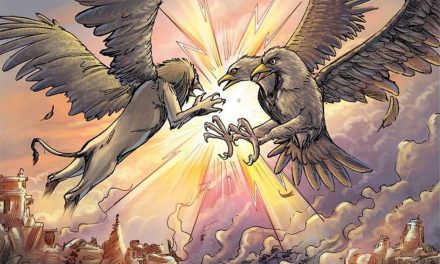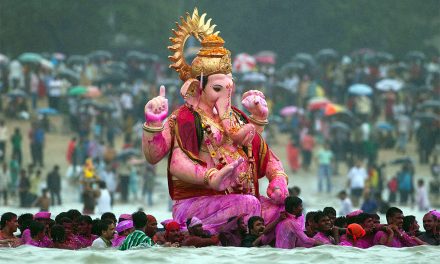“A visitor to the Indian city of Thanjavur finds two great cultural monuments. The first is the Temple of Brihadisvara, one of the most magnificent temples in India. The temple was founded almost one thousand years ago by King Rajrajesvara of the Chola dynasty (985-1016).
The second is a library, called The Thanjavur Maharaja Serfoji’s Sarasvati Mahal Library. The library is four hundred and fifty years old, and has functioned as a repository for the literature, music and paintings of many generations of south Indian scholars and artists, and as a focus for the intellectual and social world that surrounded and supported this activity. The Brihadisvara temple – primarily, of course, a religious space – functioned in cooperation with the library as a performance space in which new devotional music could be sung, or newly composed plays be performed.
Local Literary Culture
It was the kings of the Chola dynasty who initiated the building of the great Temple, and moulded Thanjavur into a religious and cultural centre. It was the kings and ministers of their successors, the Nayakas, who encouraged Sanskrit learning, and who began to collect the manuscripts that would form the nucleus of the great Library.
King Sevappa Nayaka (1532 – 1580) who founded the Nayaka dynasty in Thanjavur in 1532 had a long, predominantly peaceful and prosperous reign. He is remembered for his generosity, his building and upkeep of temples and his gift of tax-free land to Brahmin communities. In the latter years of his rule, or perhaps after his retirement from the throne, Sevappa engaged the services of a learned Brahmin, Govinda Diksita, as priest and advisor. King Sevappa and Govinda Dikshita embarked on an ambitious programme of cultural renewal and development. Sevappa’s son, Achyutappa, began his rule of Thanjavur in 1580. Like his father, he also patronized learning and devoted substantial resources to the repair and development of many temples in the Kaveri river delta.
Achyutappa appointed his son Raghunatha as regent quite early in his reign. The young prince was a favourite at the court and celebrated for his remarkable academic aptitude. Raghunatha was educated by Govinda Dikshita among others, and showed great promise in the Sanskrit scholarly disciplines and the martial arts. He is said to have written plays, poems and dramas in both Sanskrit and Telugu, and to have been a fine musician. The king also gave benefactions and prizes to scholars, and attracted learned academics to his court. More than any of the earlier Nayaka rulers of Thanjavur, Raghunatha was himself a creative writer and musician and patron of scholarship.
Govinda Dikshita’s association with the court of Thanjavur lasted approximately from 1575 to 1634. During this long period, Govinda’s intellectual and organizational influence on the south Indian court and on the culture of the entire Kaveri delta was most powerful. Govinda Dikshita was a pivotal figure in the intellectual configuration of Thanjavur district around 1600 AD. Two of his sons, Yajnanarayana and Venkatesvara, were themselves leading scholars. The former wrote two biographical memoirs of the court, focusing on king Raghunatha, as well as a work on rhetoric and poetics. The latter wrote a series of works of high scholastic theory in liturgical hermeneutics on ritual, on trigonometry, and on music.
Govinda’s descendants appear to have continued the tradition of scholarship for hundreds of years. Although little of Govinda Dikshita’s own writing survives, his reputation as a scholar and patron emerges powerfully in the inscriptional record and in stray references in the scholarly and biographical works of his son, contemporaries and successors.
In Govinda Dikshita’s direct patronage of Sanskrit culture, and in the network of scholars that grew up around him and the Thanjavur court in this period, the earliest seeds of the great Thanjavur library can be found. A vibrant network of Sankrit and Telugu scholars, and a library to support their productivity, was established in Thanjavur from the start of the seventeenth century, and this cultural formation continued until the 1670’s under Vijayaraghava Nayaka. But the dynasty was entering its last years. A disastrous series of events was about to destroy the Nayakas of Thanjavur, but the same events were to open an entirely new set of cultural opportunities. Under the Maratha king Ekoji and his influential and cultured wife Dipamba, Thanjavur once again became a vibrant centre of Sanskrit, Tamil, Telugu and Maratha culture. Dance, music and painting flourished, and scholars from all over south India began to migrate to Thanjavur to participate in the new court.
By the end of the seventeenth century, when Thanjavur was under the rule of Ekoji’s eldest son, who transformed the palace library from a modest royal collection into a major cultural centre. Through king Sahaji’s patronage, encouraged by his mother Dipamba, a new surge of scholarship delivered a new cache of manuscripts to the Thanjavur library. King Sahaji himself was a prolific author, composing no less than twenty-five works in Telugu. The subsequent rulers of the Thanjavur Maratha dynasty also contributed many of their scholarly works to the library collections. For example, king Tulaji, Sahaji’s youngest brother, wrote several interesting and original treatises on medicine, astrology and music.
Palm Leaf Manuscript
The Foundation of a New College
In or just before 1693, in South India, king Sahaji founded an academic community in the village of Tiruvisainallur, on the bank of the river Kaveri. He arranged for homes and land in the village to be donated tax-free and in perpetuity to a group of forty-six scholars and their descendants. Some of these scholars settled in the village itself, while others made Thanjavur their base. But they formed a single intellectual community, networked not only through their academic work but in many cases, through ties of family and origin. In the years to come, the scholars of this college would produce a flood of literature on all aspects of the arts and sciences, including linguistics, theology, philosophy, law and ethics, drama and medicine. The manuscripts of all this work are housed in the Thanjavur library.
One of the first scholars to arrive in Tiruvisainallur was the great Ramabhadra Dikshita who was a pivotal intellectual figure of the period. Through his education, he was in receipt of scholarly influences from some of the greatest teachers of the age. Through his students and his own writings, he amplified and passed on the learning to a large number of later scholars. Some names worth mentioning are Chokkanatha Dikshita, Neelakantha Dikshita and Sreedharavenkatesa.
But it was king Serfoji II ( reign 1798-1833) who projected the library to a new level of importance. This development was of a character quite different from the earlier history of the library. Presiding over a great cultural flowering in Thanjavur, he gathered over twenty-five Marathi scholars and poets in his court, and at least half a dozen specialists each in Sanskrit and Telugu. Serfoji’s interests in Sanskrit literature were similar to those of a modern historian: he studied and collected these materials as authoritative sources for his own intellectual pursuits, which were conducted not in Sanskrit but in Marathi, Tamil, and to some extent even in English.
Serfoji collected manuscripts actively and was responsible for the transformation of the Sarasvati Mahal Library from a relatively small courtly manuscript collection into a colossal trans-regional library. Records of many of his acquisitions still survive. The library contains a long list of the manuscripts that Serfoji brought from Varanasi. This was the largest single accession ever made to the library.
Following Serfoji’s death, his son King Shivaji (reign 1832-1855), the last king of Thanjavur, continued to add manuscripts and printed books imported from England. By the nineteen eighties, the total number of manuscripts in the Sarasvati Mahal Library had risen to forty-four thousand, of which thirty-seven thousand were in Sanskrit. In the twentieth century, the library has adopted a policy of receiving collections from the families of noted scholars.
Library Entrance
Through approximately twenty generations, the multiple intersecting lines of family, teachers, pupils and patrons have created incredibly complex networks of high knowledge in the Kaveri delta. In many cases these lines are still traceable in the twentieth century and some even to the present day. At the political heart of the region stands the temple city of Thanjavur, with its great library, filled with thousands of quiet manuscripts that preserve the thoughts of scholars from Thanjavur, the surrounding villages, from south India and from the whole Indian subcontinent.”
A fuller version of this paper will appear in French translation in the book Lieux et Communaut’es Vol.1 of _Les Lieux de Savoir, edited by Christian Jacob (Paris: Michel Albin, 2006) Source: ‘Kriti Rakshana’.
Among the palm leaf manuscripts and paper artifacts in the collection at Sarasvati Mahal Library:
Valmiki Ramayanam: A bundle of palm leaf manuscripts in grantha script kept in the showcase contain 24 thousand slokas of Valmiki Ramayana. It is a unique feature to the skill of the ancient scribers. Each palm leaf measures 3″x9″. Each side of all these leaves bear thirty lines with miniature grantha letters impossible to read with naked eyes.
Phalavathi: This is one of the oldest palm leaf manuscripts available in the library. It’s a glossary on the Purva Mimamsa Sutras of Jaimini, one of the great tattvas in the Six Schools of Indian philosophy.
Bhamati: A paper manuscript from 1468 A.D., written in Banares. It is a commentary on Sri Sankara’s Bhasyam of the Advaitic school of Philosophy.
Bhagavat Gita: One of the smallest pocket-size paper manuscripts available in Sanskrit language, written in Devanagari script. Durga Sabtasati is another paper manuscript in small size also exhibited.
Tattuva Chintamani: This Sanskrit work in Bengali script was written on a special kind of paper to give it the appearance of a palm leaf manuscript.
Aloka: A commentary on the Cint












